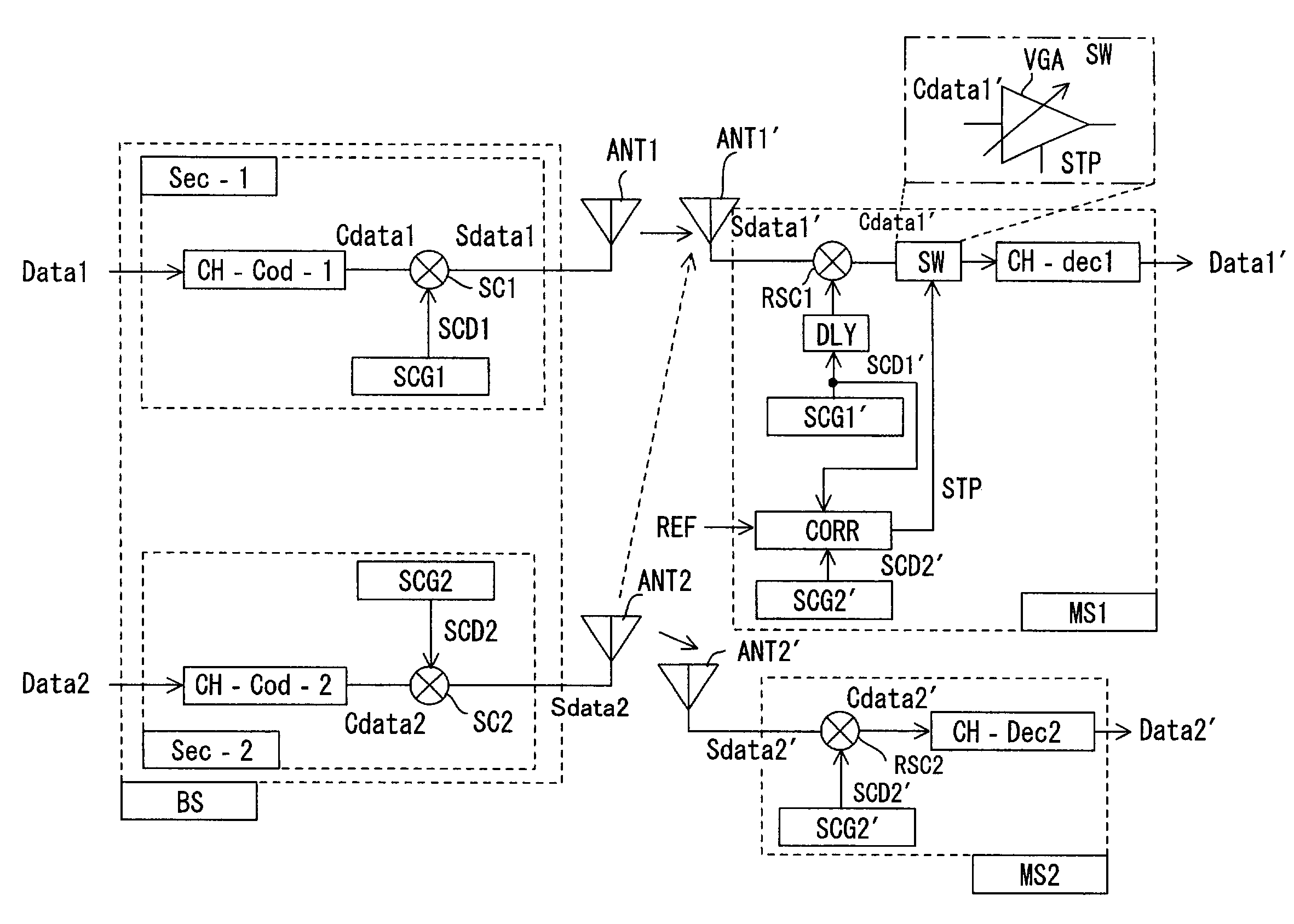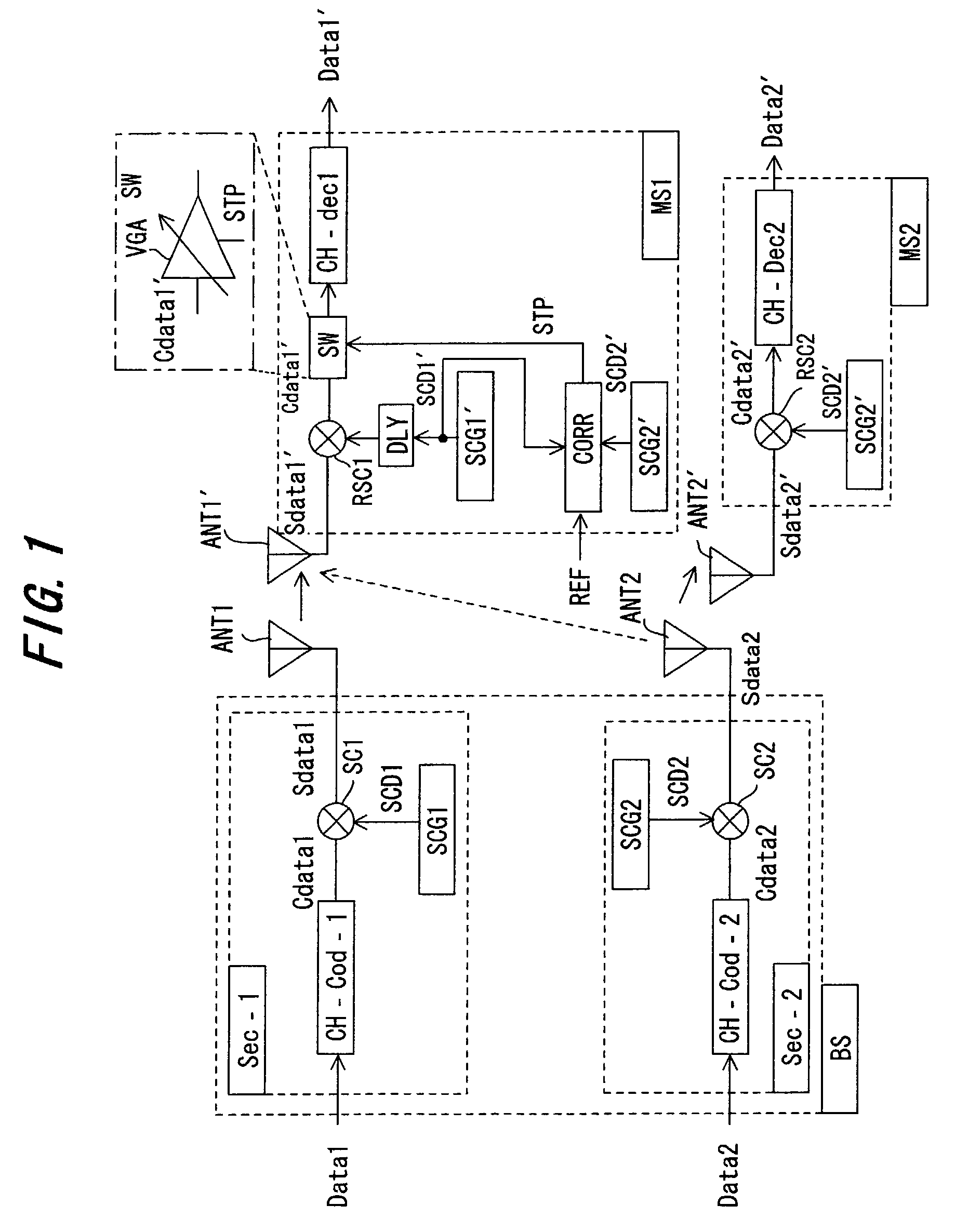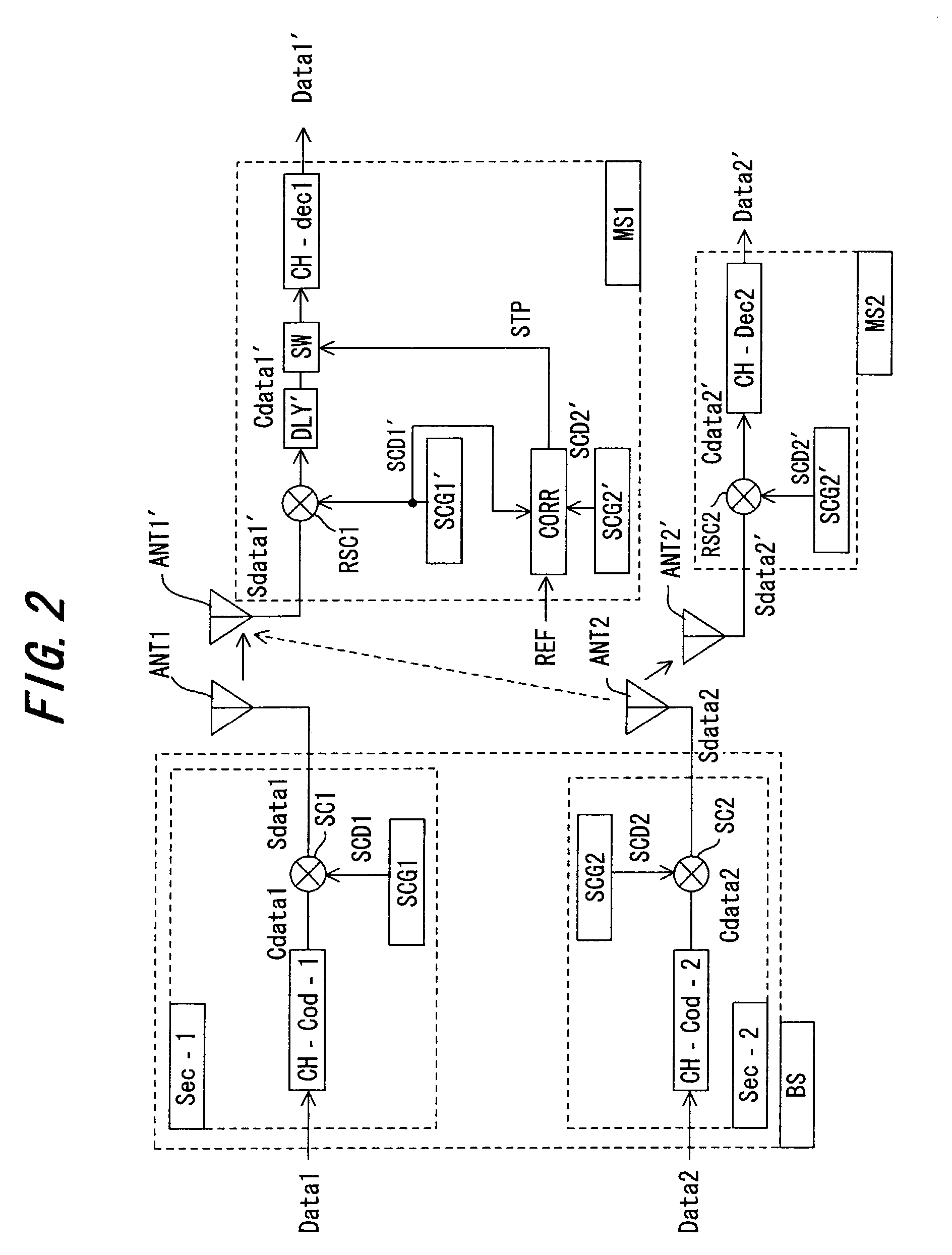Code division multiple access signal receiving apparatus
a technology of multiple access signal and receiving apparatus, which is applied in the direction of coding, amplitude demodulation, code conversion, etc., can solve the problems of interference noise, poor power efficiency of non-directional antennas, and degrade communication quality, so as to improve the quality of the receive signal, increase the interference noise, and increase the noise
- Summary
- Abstract
- Description
- Claims
- Application Information
AI Technical Summary
Benefits of technology
Problems solved by technology
Method used
Image
Examples
first embodiment
[0042](A) First Embodiment
[0043]FIG. 1 is a block diagram of a code division multiple access communication system that includes a code division multiple access signal receiver according to the present invention. This illustrates a case in which a cell has been divided into sectors. Further, the Figure illustrates an example of a case where user data signals Data1, Data2 are transmitted from a single base station (transmitting apparatus) BS to mobile stations (receiving apparatus) MS1, MS2 in two sectors neighboring each other.
[0044]Sectors Sec1, Sec2 in the base station BS have transceive antennas ANT1, ANT2 possessing separate directivities and, by virtue of the antenna directivities, take charge of the sending and receiving of signals to and from coverage areas (sectors) that are geographically independent of each other. Portions of the base station BS and mobile stations MS1, MS2 in FIG. 1 that have no bearing upon the present invention are deleted, although the deleted structure...
first modification
[0051
[0052]In the above embodiment, control for halting passage of a receive signal is carried out only by the mobile station MS1. Depending upon a change in the reception environment, however, the mobile station MS2 also may exercise control for halting passage of a receive signal as appropriate. Further, the foregoing is described with regard to a single combination of spreading-code sequences, in which the spreading-code sequences used in respective ones of the mutually adjacent sectors are SCD1, SCD2. In actuality, however, there are multiple combinations of spreading-code sequences and the above-described control is performed with regard to the appropriate combinations. In addition, though the foregoing is for a case that takes into consideration spreading-code sequences used in mutually adjacent sectors, the above-described control can be applied to spreading-code sequences used by mutually adjacent base stations.
second modification
[0053
[0054]FIG. 2 is a modification of the first embodiment, in which components identical with those of the first embodiment are designated by like reference characters. The difference is the location of the delay unit. Specifically, in the first embodiment, the despreading-code sequence SCD1′ is delayed a prescribed period of time. In the modification, however, the despread signal Cdata1′ output from the despreading circuit RSC1 is delayed a prescribed period of time. That is, a delay unit DLY′ in this modification delays the despread signal Cdata1′ for a predetermined period of time in such a manner that the despread signal Cdata1′ will enter the switch SW following the completion of calculation of the cross-correlation value.
[0055]Structure of Cross-correlation Detector
[0056]FIG. 3 is a block diagram of the cross-correlation detection controller, and FIG. 4 is a diagram useful in describing the operation thereof. This illustrates a case where partial correlation of despreading-c...
PUM
 Login to View More
Login to View More Abstract
Description
Claims
Application Information
 Login to View More
Login to View More - R&D
- Intellectual Property
- Life Sciences
- Materials
- Tech Scout
- Unparalleled Data Quality
- Higher Quality Content
- 60% Fewer Hallucinations
Browse by: Latest US Patents, China's latest patents, Technical Efficacy Thesaurus, Application Domain, Technology Topic, Popular Technical Reports.
© 2025 PatSnap. All rights reserved.Legal|Privacy policy|Modern Slavery Act Transparency Statement|Sitemap|About US| Contact US: help@patsnap.com



